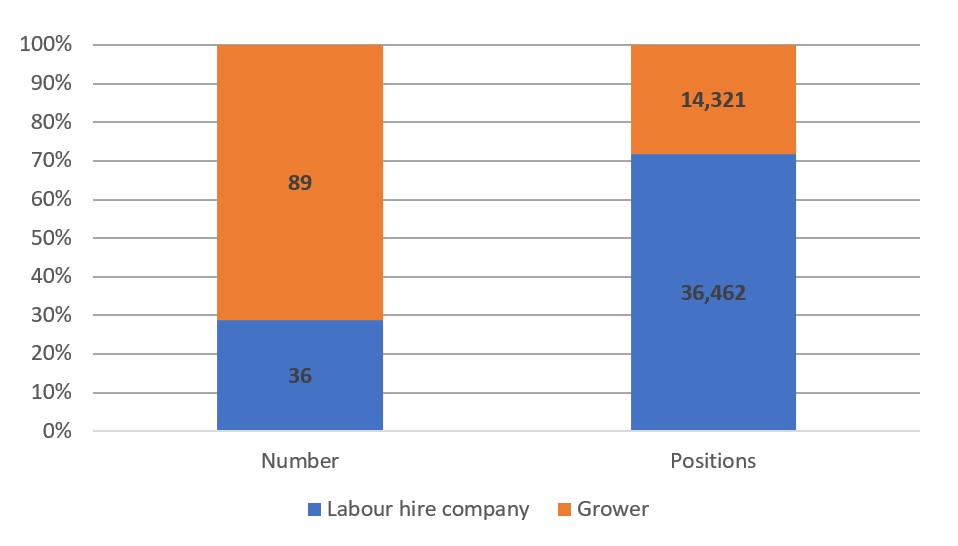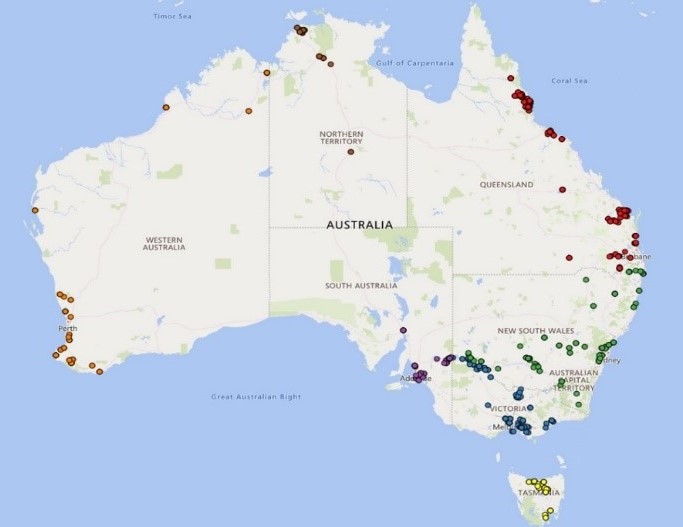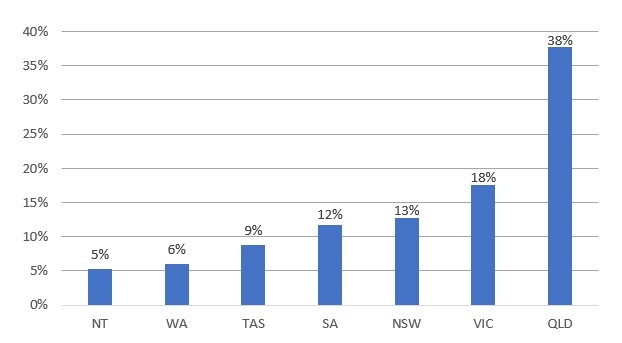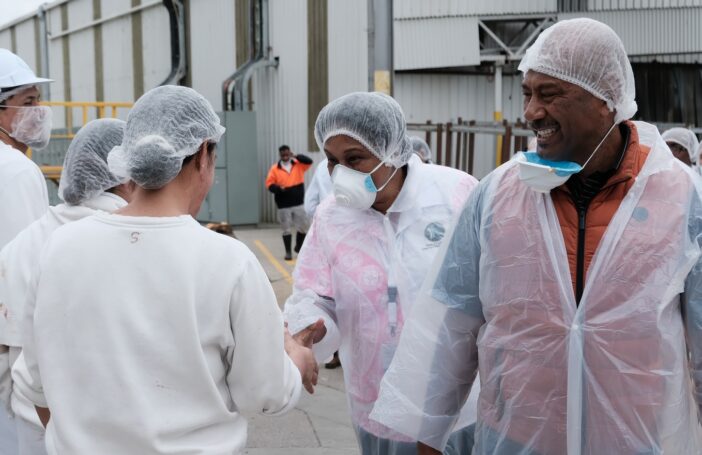Australia’s Seasonal Worker Programme (SWP) is often seen, incorrectly, as an aid program. For example, a blog posted on the Lowy Institute’s Interpreter (15 April 2020) claims that “labour mobility is managed under the aid program”. This widespread misconception can affect how both sending-country governments in the Pacific and Australian agencies manage their roles under the SWP.
Both the SWP and the Pacific Labour Scheme (PLS) are entirely driven by employer demand. Employers participate on a purely voluntary basis. There are no country quotas. Understanding the role of employers in the operation of the SWP is crucial to understanding how it works and how effective it is.
All aspects of the employer’s engagement of workers are highly regulated, starting with the extensive vetting process an employer must go through to gain approved employer (AE) status.
AEs essentially fall into two categories. The first type of AE is a grower or farmer who not only employs seasonal workers, but also supervises them at work and provides pastoral care. The second type of AE is a labour hire company which is responsible for all aspects of being the legal employer, such as payment of wages as well as meeting the pastoral care obligations, but does not supervise the worker during work hours. The labour hire company or contractor is a labour market intermediary supplying labour services to a host workplace. The advantage for growers of this arrangement is that they can, for a set fee per worker per hour worked, minimise their transaction costs and risks, especially relating to overseas recruitment. Some farmers prefer hiring directly, but, in general, the smaller the farmer and their demand for labour, the more attractive it is to go through a labour hire company.
Data provided by the Department of Education, Skills and Employment (DESE) allowed us to undertake some analysis and provide some interesting insights into which types of employers use the SWP, and how many workers they hire. (Please see notes at the end of the blog.)
As of February 2020, some 125 employers had been approved by the government to hire workers under the SWP. All workers hired through the SWP fill a position that has been approved by the government. Between 1 July 2012 and 12 February 2020, some 51,000 positions were approved. We have categorised AEs as either growers or labour hire companies. Our results show that most AEs are growers, but most SWP workers are hired by labour hire companies. Figure 1 shows that 78 per cent of positions approved under the SWP since 2012 are taken by the 22 per cent of AEs who are labour hire companies. The average labour hire company employs 6.3 times as many SWP workers as the average grower: 1,013 compared to 161. The biggest five hirers of SWP workers are all labour hire firms.
Figure 1: SWP approved employers and positions, by employer type, 1 July 2012 to 12 February 2020
Moreover, SWP approved positions (or jobs) have been concentrated among a small number of AEs, mainly labour hire firms. Figure 2 below lines up all employers from largest to smallest on the horizontal axis and shows what share of approved positions are due to the biggest (1, 2, 3, etc) firms. The top 31 AEs employ 90 per cent of all workers. The top four employers (all labour hire firms or ‘L’ in the figure) account for nearly half of all SWP jobs (48 per cent), while the top ten employers (of which seven are labour hire firms) account for 70 per cent.
Figure 2: Concentration of approved SWP positions by employer, 1 July 2012 to 12 February 2020

What is the reason for both the dominance of labour hire companies and the concentration of employment within a few companies? The SWP has high transaction costs: all workers are hired from overseas; they require pastoral care and accommodation; and numerous government regulations have to be satisfied. These costs are only worth incurring if they can be spread over a large number of workers, and they are less onerous if the firm has labour market expertise. Labour hire companies are able to hire large numbers of workers, provided they can get a number of farmers interested. They also specialise in understanding the details of often complex labour regulations, so they are well positioned to bear the resultant transaction costs.
A second key feature of the SWP is the geographical spread of workers’ jobs. SWP workers are employed in all states and the Northern Territory. Figure 3 shows that Queensland is in the lead with 38 per cent of all SWP placements, followed by Victoria (18 per cent), NSW (13 per cent) and South Australia (12 per cent).
Figure 3: Distribution of SWP jobs, by state/territory, 1 July 2012 to 12 February 2020
The large geographical spread of SWP workers across and within states (Figure 4) is in marked contrast to the concentration of Recognised Seasonal Employer scheme workers in specific regions of New Zealand. It is also another reason for the dominance of labour hire companies in the SWP. If your farm is very remote, you may not want to be responsible for your workers as soon as they arrive in, say, Brisbane. You might rather contract out responsibility for recruitment and transport. Also note that, while having such a dispersed program makes it difficult to monitor, having a few dominant players has the reverse effect.
Figure 4: SWP recruitment locations in Australia, 2018–19

We have also seen in our analysis of Pacific countries participating in the SWP that the countries that have been most successful in sending workers to Australia are those that have attracted the large labour hire companies. This latter group can scale up rapidly (as they recruit new farmers to supply labour to) and can take a lot of the burden of governance of the program away from the sending country, both before the workers leave, and when they are in Australia.
The best SWP stories come from the small growers: those farmers who have developed a long-term personal relationship with a relatively small group of workers (for example, here, here and here). However, it may well be that the future of the SWP is with large labour hire companies, who are able to manage its heavy regulatory burden as well as sending-country vagaries, and who are able to de-risk the scheme for growers.
Sources: DESE approves SWP positions on demand, and our analysis is based on the cumulative number of annual approved positions between 1 July 2012 and 12 February 2020. DESE data covers the names of employers, the number of positions approved for that employer in the period, and the state in which they are approved. We have categorised all employers as either growers or labour hire companies (contractors are included with the latter).
Note also that the number of seasonal worker positions approved and the number of these positions an approved employer fills through the SWP may not be the same, for a variety of reasons. In fact, the number of SWP visas granted between 1 July 2012 and the end of January 2020 was 46,575 compared with the 50,783 SWP approved positions for roughly the same period (ending 12 February 2020).





Thank you Richard and Stephen for another informative and highly relevant post. Please keep up the great work.
Few points I’d like to add:
– All labour hire (LH) businesses must include payroll tax as a component of their charge rate to their clients regardless of how many people are placed with that client. So, if you, as a grower are under the PT threshold you would look closely at the cost v benefit of using LH. Having said this, many small growers still do use LH. Conversely, the servicing costs for a LH business to properly service (say) 5 people in a remote location may make it uneconomical.
– Generations of farmers have used LH (many kosher LH, many not) for a myriad of reasons. I fully support your statement regarding the expertise required to properly implement the SWP especially in this era where the Horticulture Award has undergone significant change and other factors (eg accommodation and transport, etc) are so much in the spotlight. The onus is on us to reinforce and implement the myriad of rules governing us whilst at the same time assisting our clients to adapt to change and giving our men/women every opportunity to flourish.
– We (LH) do not always get it right but as a senior AE, working closely with some of the majors in our SWP world, I believe that we are LH industry leaders and I’m proud of the role we play.
– No grower is forced to use LH and all growers can change their mind and do it themselves if they so decide. Theirs is an incredibly complex world (as is ours) and if they feel they are getting value for money then the use of LH will continue to evolve and we will continue to improve and further value-add to our personnel and our clients, areas which don’t really get a mention. Another time perhaps.
I disagree that the growth in the programme is to come from Labour Hire. I think that growers and farmers will soon work out that the cost to administer the programme is not as high as the cost of Labour Hire fee. If you need 8-10 Seasonal Workers for 5 or more months then the programme is worth administering yourself. You have more control and more fun! I think we need to encourage the small farms to take it on. I believe it would be better for the people and better for the programme if family farms welcome Seasonal Workers into their lives.
If there are any farms out there who are currently labour hiring, research it and do a costing, it will work in your favour trust me!
Thanks for this post Stephen and Richard. First and foremost, SWP is run for profit where the employer, the employee, and the labour-hire companies are all meant to gain from the scheme. SWP is no charity: food would rot if not picked in time by the workers! The divvying up of the profits generated from SWP rests on how power is distributed between these groups. My guess is that the worker has least leverage in this exchange, thus is most at risk of being short-changed from SWP. Furthermore, islanders are not known for their bargaining skills! Consequently, island governments have a role in ensuring that their workers/citizens are paid their fair dues – both in pay and with pastoral care.
Interesting statistics Richard. The Approved Employers of Australia have members from all size operations and Contractors. Labour Hire certainly has the most workers for the reasons you mentioned. I find the comments on the pastoral care responsibilities by AEs most interesting. I think the AEA should start telling the public some of the horrific issues they have to deal with and pay for which goes above and beyond their pastoral care responsibilities. It is about time we start putting all the facts on the table to demonstrate how committed the majority of AEs actually are to the welfare and wellbeing of workers.
Juliet. Fair comment, we can only rely on analysis. Where do these figures come from & importantly who is collecting them & from whom are they being collected from. Short story company does covid temperature check on worker. 1.5 hrs later worker is at doctors in severe pain. Doctor says worker has severe temperature. Need to go to hospital. Worker taken to hospital admitted for emergency operation. Yet employer supervisor writes worker temperature normal. Did so for 4 days prior while worker said to my self I have been hot & cold for 5 days now. In my terminology that is called a fever. Hence my first & second sentence.
Juliet, many thanks for your comment. Our analysis is based on basic administrative data on approved employers. I have discussed the recent situation of seasonal workers in a 29 May blog ‘How are seasonal workers in Australia faring behind closed borders?’ https://devpolicy.org/how-are-seasonal-workers-in-australia-faring-behind-closed-borders-20200529/
From the feedback I have received, approved employers have made big efforts to support their workers, despite many feeling frustrated at the lack of support from government.
Richard
I’m not sure that the larger contractors are that active here in the Goulburn Valley, the Pear and Apple growing region of Northern Victoria, however the growers in this area are very satisfied with the Seasonal workers that they employ. Somewhere around 100-200 workers come here from the Program directly employed by growers, who have built up relationships with their workers and are very pleased to have them come back on the 3 year 403 Visas. This would not be possible if there was Labour Hire Company involved telling the growers which workers they are allocated.
It is of utmost importance to continue this program for eligible Approved employers Growers directly employing their selected workers.
Thanks for this post. I wonder whether it is possible to do an analysis of the extent to which labour hire companies fulfill their pastoral care and employment obligations – or if such an analysis has been done? I believe the SWP is extremely important – but the stories we hear from time to time of labour hire companies not fulfilling fairly basic obligations does disturb me – particularly during the pandemic.